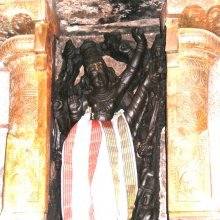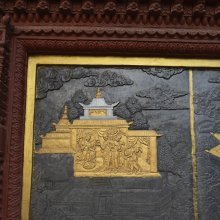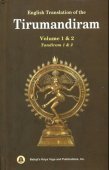Realising, Realizing: 2 definitions
Introduction:
Realising means something in Hinduism, Sanskrit, the history of ancient India. If you want to know the exact meaning, history, etymology or English translation of this term then check out the descriptions on this page. Add your comment or reference to a book if you want to contribute to this summary article.
Images (photo gallery)
In Hinduism
Vastushastra (architecture)
Source: Shodhganga: Elements of Art and Architecture in the Trtiyakhanda of the Visnudharmottarapurana (vastu)Realizing the existence of Gods was possible in the ages (yuga) of Kṛta, Tretā and Dvāpara, but impossible in Kali-yuga.—In the Vedic Age, people practised to connect themselves with gods through the yajñas (“sacrificial rites”) by chanting the Vedic mantras or practicing penance. In the Vedic era, Agni is considered as the mediator between the deities and the devotees or sages. In the Viṣṇudharmottarapurāṇa it is clearly stated that the requirement of making of temple is most important in the Kaliyuga. Because, in the three other yugas i.e.,, Kṛta, Tretā and Dvāpara; people could realize the existence of Gods and had tried directly to connect themselves with the supreme spirit. But in the Kaliyuga it is totally impossible due to the growth of unlawful activities in the society.

Vastushastra (वास्तुशास्त्र, vāstuśāstra) refers to the ancient Indian science (shastra) of architecture (vastu), dealing with topics such architecture, sculpture, town-building, fort building and various other constructions. Vastu also deals with the philosophy of the architectural relation with the cosmic universe.
India history and geography
Source: Singhi Jain Series: Ratnaprabha-suri’s Kuvalayamala-katha (history)(Not) Realising (the sinful nature) (of one’s actions) represents a scene of human life commonly depicted on the Saṃsāracakra paintings, in ancient India, as mentioned in the Kathās (narrative poems) such as Uddyotanasūri in his 8th-century Kuvalayamālā (a Prakrit Campū, similar to Kāvya poetry).—Page 185.21 f.: Here follows a description of a printed scroll illustrating the Jaina conception of saṃsāracakra. [...] The saṃsāra-cakra illustrated the three worlds of hell, human world and the world of gods. [For example:] Traders engaged in false dealings and not realising the sinful nature of their actions

The history of India traces the identification of countries, villages, towns and other regions of India, as well as mythology, zoology, royal dynasties, rulers, tribes, local festivities and traditions and regional languages. Ancient India enjoyed religious freedom and encourages the path of Dharma, a concept common to Buddhism, Hinduism, and Jainism.
See also (Relevant definitions)
Full-text (+330): Prakarshana, Phalasiddhi, Ugavana, Bhayadassi, Sacchikatabba, Sacchikaronta, Bhayadassavi, Turiyanubhava, Ugavitapagavita, Siti Sutta, Ugrani, Anisamsa Sutta, Paramaudarika, Jnanayajna, Anupamatapa, Ritamarga, Gurupraciti, Nandikkhaya Sutta, Antaradrish, Atmananam.
Relevant text
Search found 279 books and stories containing Realising, Realizing; (plurals include: Realisings, Realizings). You can also click to the full overview containing English textual excerpts. Below are direct links for the most relevant articles:
Philosophy of Charaka-samhita (by Asokan. G)
Darśanas (philosophical speculations) < [Chapter 1 - Introduction]
Indian sciences (the eighteen disciplines) < [Chapter 1 - Introduction]
Way of life to liberation [in Charaka philosophy] < [Chapter 8 - Ethics]
Literature: A Quest for Aesthetics of < [April – June, 1990]
Realising the Language of Darkness < [July – September, 2001]
Swami Vivekananda’s Voyage for the World’s Parliament of Religions < [October – December, 1993]
Ashtavakra Gita (by Ashtavakra)
Brahma Sutras (Ramanuja) (by George Thibaut)
Sutra 3.3.39 < [Third Adhyaya, Third Pada]
Sutra 2.1.30 < [Second Adyaya, First Pada]
Sutra 1.1.21 < [First Adhyaya, First Pada]
Mandukya Upanishad (Gaudapa Karika and Shankara Bhashya) (by Swami Nikhilananda)
Mandukya Karika, verse 1.28 < [Chapter I - Agama Prakarana (Scripture)]
Mandukya Karika, verse 4.92 < [Chapter IV - Alatashanti Prakarana (Quenching the firebrand)]
Mandukya Karika, verse 4.2 < [Chapter IV - Alatashanti Prakarana (Quenching the firebrand)]
Related products




